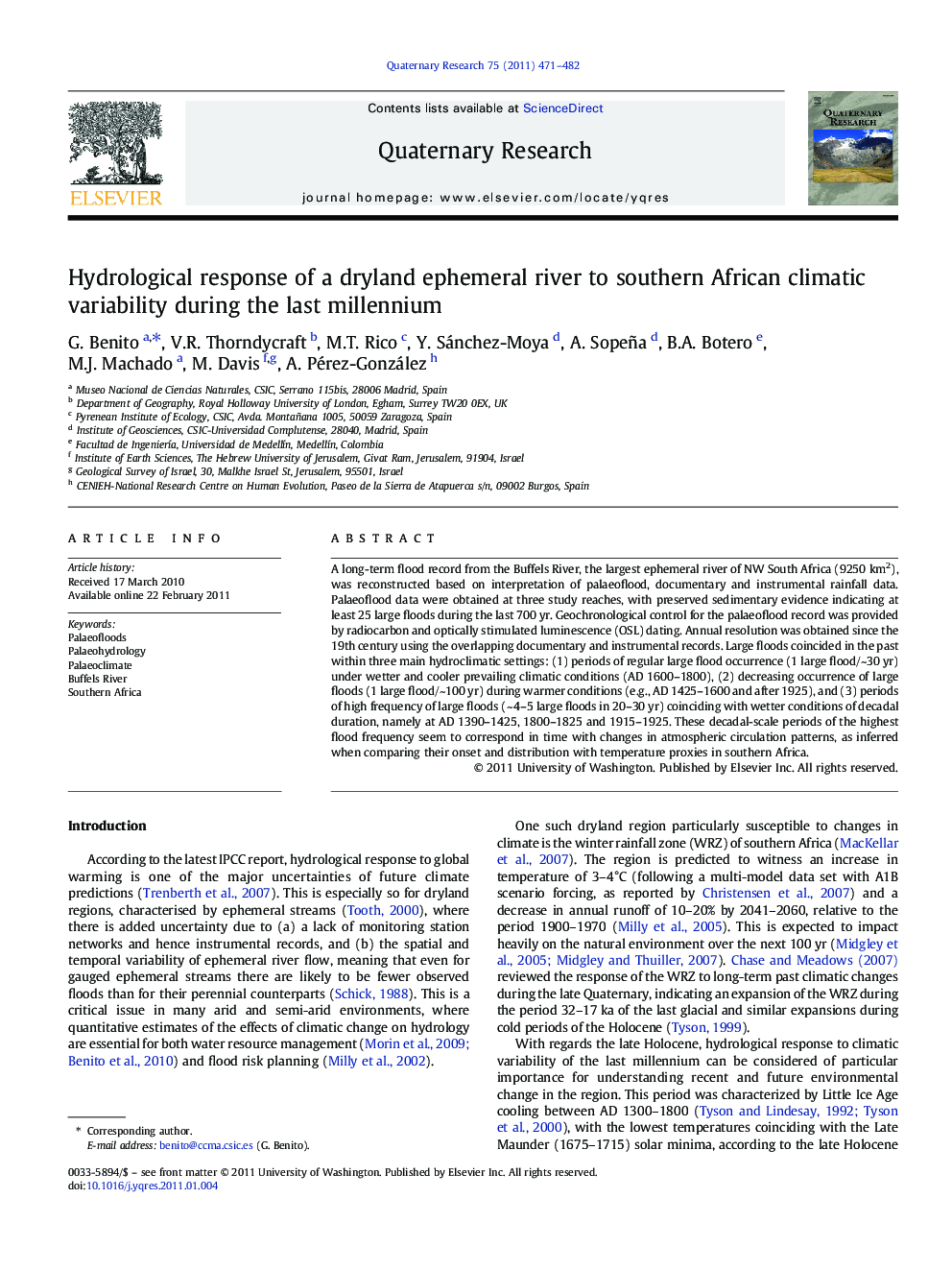| Article ID | Journal | Published Year | Pages | File Type |
|---|---|---|---|---|
| 1045819 | Quaternary Research | 2011 | 12 Pages |
A long-term flood record from the Buffels River, the largest ephemeral river of NW South Africa (9250 km2), was reconstructed based on interpretation of palaeoflood, documentary and instrumental rainfall data. Palaeoflood data were obtained at three study reaches, with preserved sedimentary evidence indicating at least 25 large floods during the last 700 yr. Geochronological control for the palaeoflood record was provided by radiocarbon and optically stimulated luminescence (OSL) dating. Annual resolution was obtained since the 19th century using the overlapping documentary and instrumental records. Large floods coincided in the past within three main hydroclimatic settings: (1) periods of regular large flood occurrence (1 large flood/~30 yr) under wetter and cooler prevailing climatic conditions (AD 1600–1800), (2) decreasing occurrence of large floods (1 large flood/~100 yr) during warmer conditions (e.g., AD 1425–1600 and after 1925), and (3) periods of high frequency of large floods (~ 4–5 large floods in 20–30 yr) coinciding with wetter conditions of decadal duration, namely at AD 1390–1425, 1800–1825 and 1915–1925. These decadal-scale periods of the highest flood frequency seem to correspond in time with changes in atmospheric circulation patterns, as inferred when comparing their onset and distribution with temperature proxies in southern Africa.
